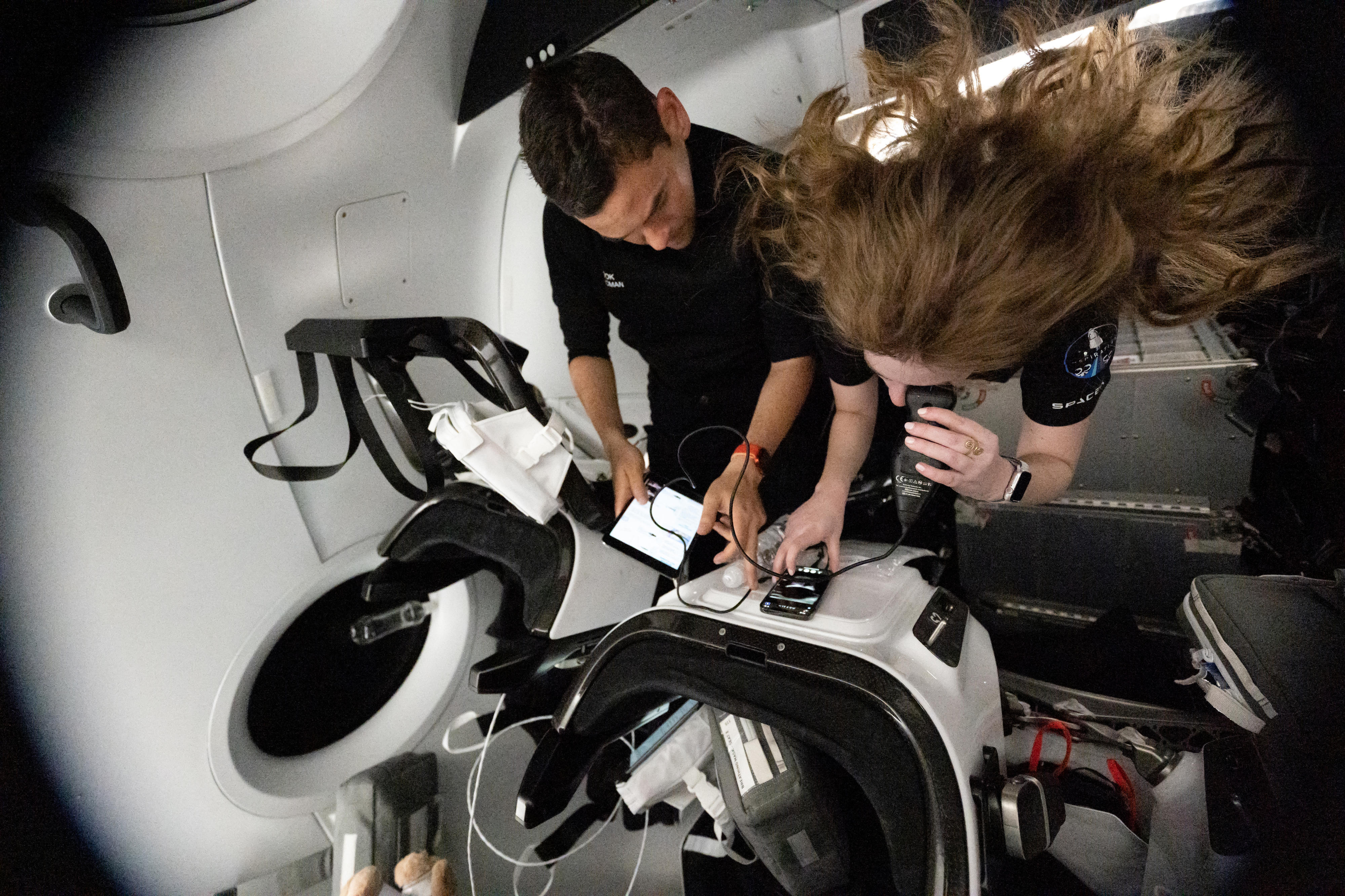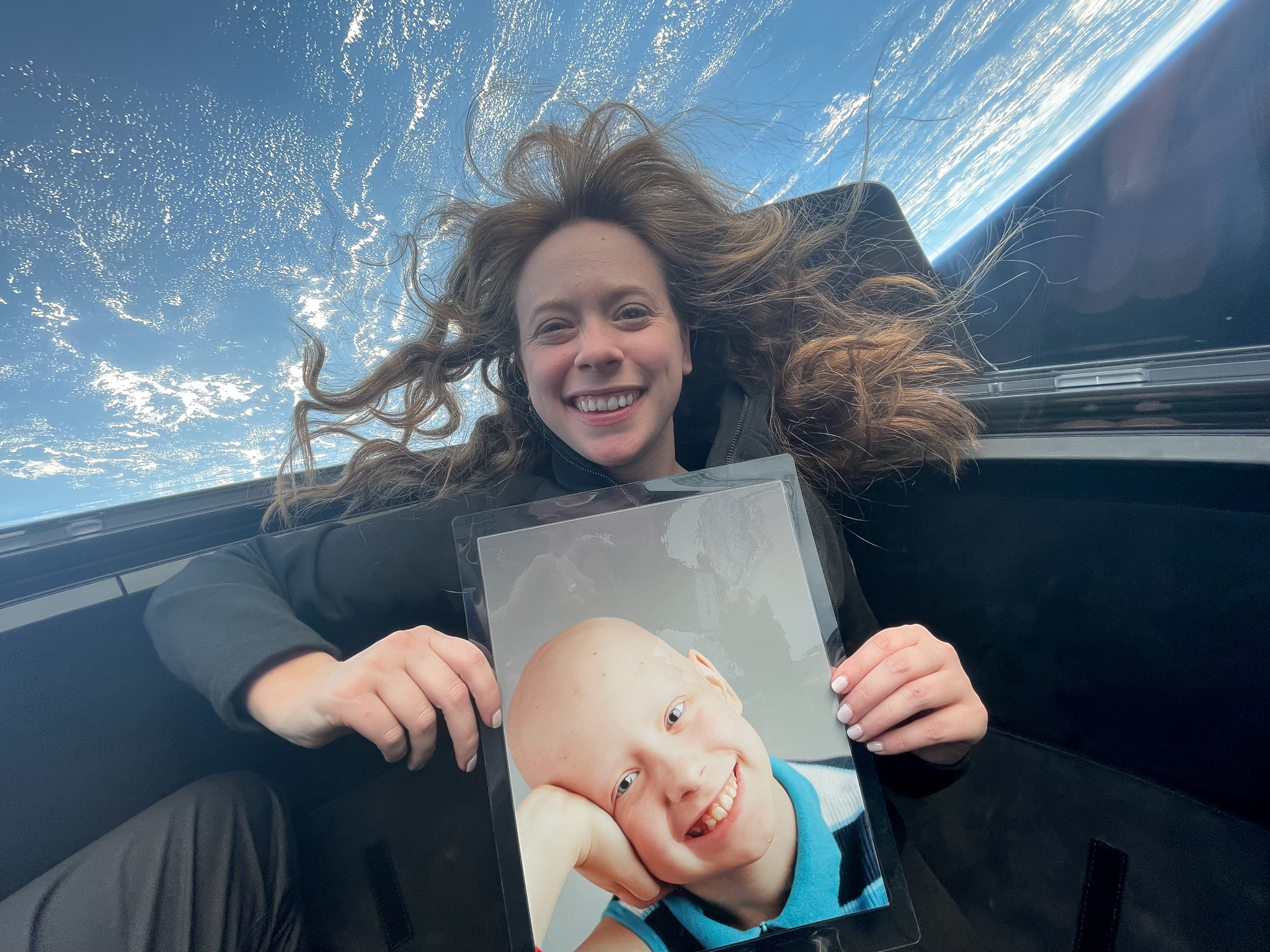Amongst the super-rich, it’s almost a requirement at this point to try some wacky way of halting the irrepressible march of time. Anti-aging strategies range from the positively vanilla – drink lots of water and wear sunscreen – to the still-quite-tame cosmetic surgery options, to the extremely expensive and bizarre (penis rejuvenation, anyone?). But what if all you had to do was take a quick trip into space?
A package of new papers is giving us our most detailed look yet at what happens to the human body during short-term spaceflight. Samples collected from the first all-civilian crew of SpaceX’s Inspiration4 mission have been analyzed, as we approach the third anniversary of the mission’s return from a successful few days orbiting the Earth at a height of 575 kilometers (357 miles) – that’s about 160 kilometers (99 miles) further away than the ISS.
While the crew was in orbit, they gathered copious scientific data, including blood and skin swab samples from their own bodies, overseen by the mission’s chief medical officer and physician assistant Hayley Arceneaux.

The crew spent much of their time in orbit conducting science experiments.
Image credit: SpaceX/Inspiration4
Scientists at over 100 institutions across more than 25 countries have worked together to coordinate the analysis effort since the mission’s splashdown, culminating in the recent publication of the Space Omics and Medical Atlas (SOMA) package, which also comprises data from a variety of other missions like the NASA Twins Study.
“Civilian participants have different educational backgrounds and medical conditions compared to astronauts with career-long exposure to spaceflight. Understanding their physiological and psychological responses to spaceflight and their ability to conduct research is of utmost importance as we continue to send more private astronauts into space,” explained Dr Emmanuel Urquieta, chief medical officer at the Translational Research Institute for Space Health (TRISH), in a statement.
Amongst the wealth of interesting results, some of the most striking findings concerned what happened to the astronauts’ DNA.
Telomeres, DNA, and cellular aging
Every crewmember experienced lengthening of their telomeres during the flight. Telomeres are the protective caps on the ends of chromosomes, which get shorter during our lives as our bodies’ cells undergo continuous cycles of replication. Eventually, the telomeres become so short that they lose their protective power.
Telomere shortening is a signal that a cell is reaching the end of its useful life and a hallmark of cellular senescence – itself intrinsic to the aging process. For a long time, scientists have been experimenting with ways of boosting longevity by slowing telomere shortening.
Since the Inspiration4 crew all showed evidence of telomere lengthening during their brief sojourn into the cosmos, it can be said that they got genetically “younger” during the mission. “It’s really a remarkable finding in a number of ways and helps us solidify our findings,” commented Susan Bailey, a professor at Colorado State University, in a press briefing discussing the research.
In case any multimillionaires out there are already picking up the phone to Elon Musk to secure their spot on the next mission, we should let you know that this telomere lengthening was unfortunately temporary. Not only do they shrink again when you’re back on terra firma, they actually end up shorter than before.
“It’s one of the things that doesn’t quite get back to where you were when you started,” said Bailey. “We think that there is a real opportunity to think about long-term health outcomes for astronauts once they return to Earth and how we can better monitor and improve that outcome.”
So, for the full Benjamin Button experience, you’d probably need to be thinking about settling in space for the long haul, rather than just a weekend mini-break. The same telomere lengthening was previously observed in NASA astronaut Scott Kelly after his one-year stint in orbit back in 2015. At the time, this was a huge surprise to scientists, who presumed that the stress of a space mission would have the opposite effect.
“We think it’s the DNA’s equivalent to hormesis,” professor of genomics, physiology, and biophysics Chris Mason told Space.com. “It’s the effect that we see when you stress the body, for example in the gym, your muscles get sore, but the body responds by building strength.”

The mission’s chief medical officer, Hayley Arceneaux, is a trained physician assistant and bone cancer survivor. She became the first human in space with a prosthetic leg when she flew with Inspiration4.
Image credit: Inspiration4 crew
But again, any positive effect on telomeres comes with a whole host of tradeoffs in the rest of the body. Inevitable exposure to radiation in space can damage DNA unless countermeasures are imposed, something the SOMA data is helping scientists explore. There are immune system changes to contend with, a small percentage of which appear to persist for at least three months when astronauts return to Earth.
Another of the studies in the collection found alarming evidence that lengthy space travel can permanently damage the kidneys, meaning that unless protective treatment is given, any future Mars colonizers will only be making it back home if their ships are equipped with dialysis machines.
We also know that time in orbit has some impact on the cardiovascular system, even in the short-term, which seems to be highly variable between people. That’s before you even get to the psychological implications – it’s not for everyone.
Space physiology studies like this are always limited by sample size – the Inspiration4 crew numbered only four individuals – which is another reason why the accumulated data in the SOMA package makes it such a valuable resource.
“Frequent space travel is on the horizon and more commercial spaceflight participants are eager to venture forward,” said TRISH’s executive director Dr Dorit Donoviel. “We must plan appropriately and ensure scientific research in space is performed as accurately and safely for everyone.”
Time in space does make you – temporarily – genetically younger. The rest of your body, on the other hand, might be aging even faster. And your DNA is just going to immediately age back up again as soon as you return to Earth. All things considered, if Benjamin Button-ing is your thing, and until we have Starfleet levels of medical tech at our disposal, perhaps it’s worth getting back to basics with some good ol’ water and sunscreen.
The SOMA package of papers has been compiled into a Nature collection, accessible here.
Source Link: Turns Out, Billionaires Can Go To Space To (Temporarily) “Benjamin Button” Themselves